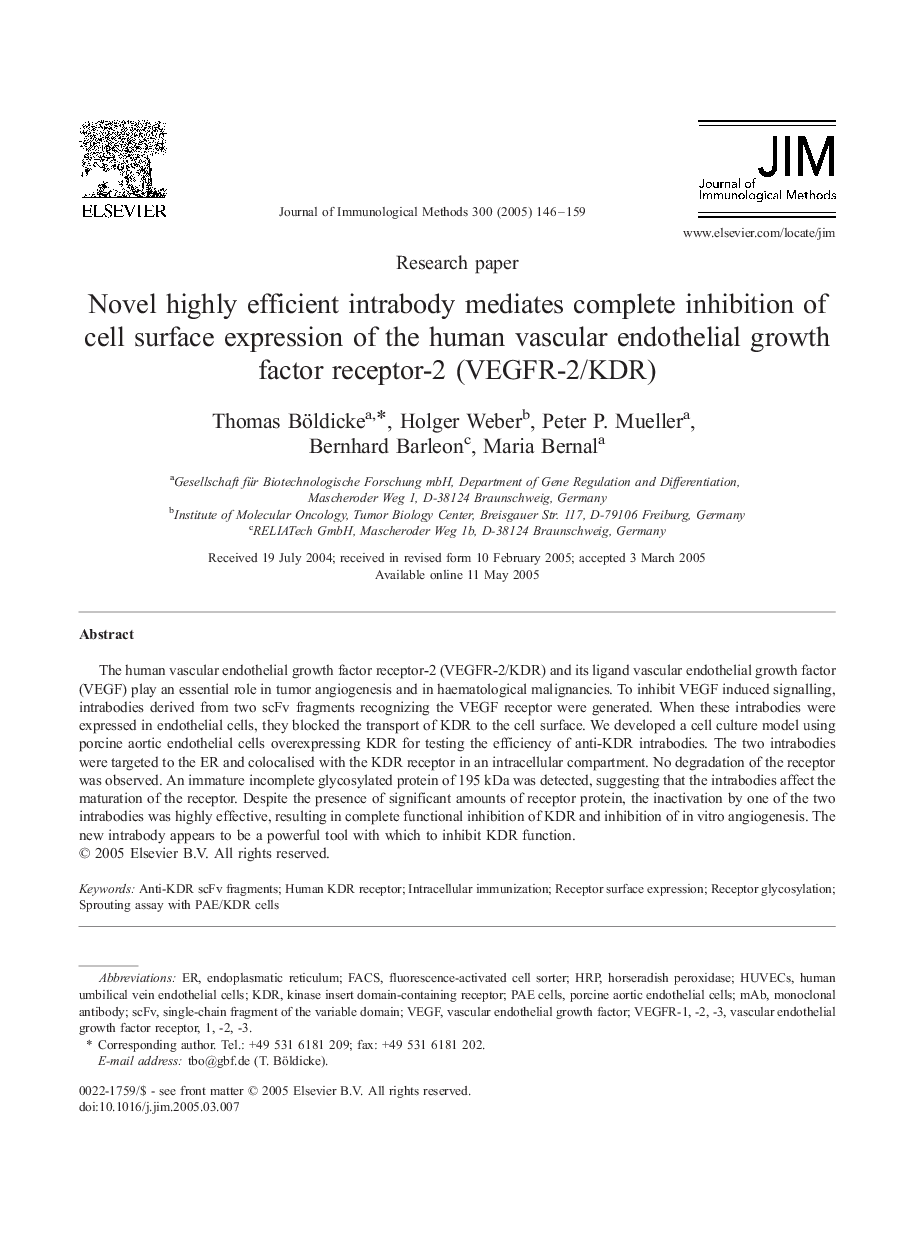| Article ID | Journal | Published Year | Pages | File Type |
|---|---|---|---|---|
| 9902319 | Journal of Immunological Methods | 2005 | 14 Pages |
Abstract
The human vascular endothelial growth factor receptor-2 (VEGFR-2/KDR) and its ligand vascular endothelial growth factor (VEGF) play an essential role in tumor angiogenesis and in haematological malignancies. To inhibit VEGF induced signalling, intrabodies derived from two scFv fragments recognizing the VEGF receptor were generated. When these intrabodies were expressed in endothelial cells, they blocked the transport of KDR to the cell surface. We developed a cell culture model using porcine aortic endothelial cells overexpressing KDR for testing the efficiency of anti-KDR intrabodies. The two intrabodies were targeted to the ER and colocalised with the KDR receptor in an intracellular compartment. No degradation of the receptor was observed. An immature incomplete glycosylated protein of 195 kDa was detected, suggesting that the intrabodies affect the maturation of the receptor. Despite the presence of significant amounts of receptor protein, the inactivation by one of the two intrabodies was highly effective, resulting in complete functional inhibition of KDR and inhibition of in vitro angiogenesis. The new intrabody appears to be a powerful tool with which to inhibit KDR function.
Keywords
FACSmAbscFvHRPHUVECSKDRMonoclonal antibodyIntracellular immunizationporcine aortic endothelial cellsHuman umbilical vein endothelial cellsendoplasmatic reticulumVascular endothelial growth factorVascular Endothelial Growth Factor (VEGF)fluorescence-activated cell sorterHorseradish peroxidasekinase insert domain-containing receptor
Related Topics
Life Sciences
Biochemistry, Genetics and Molecular Biology
Biotechnology
Authors
Thomas Böldicke, Holger Weber, Peter P. Mueller, Bernhard Barleon, Maria Bernal,
